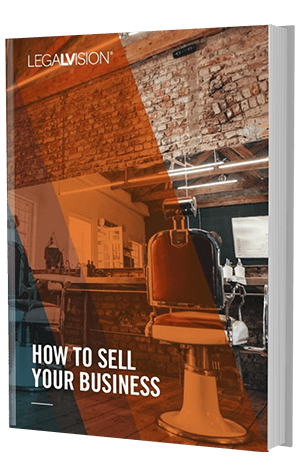In Short
- A Creditors’ Voluntary Liquidation (CVL) allows a company to close down when it can’t pay its debts.
- Directors can initiate a CVL, appointing a liquidator to manage asset sales and debt repayment.
- CVLs help protect directors from personal liability and can provide a structured exit from financial difficulties.
Tips for Businesses
If your business is struggling with debt, consider a CVL as a proactive step to wind up operations and limit personal liability. Engaging a professional liquidator ensures assets are fairly distributed to creditors and helps directors avoid legal risks associated with insolvency. Early action can prevent worsening debt issues.
Table of Contents
The term ‘winding up a company’ is the process of bringing an end to a company. As an owner of a company, it is important to know whether or not your company is solvent. If your company is unable to pay its debts when they fall due, known as insolvency, your creditors can forcibly seize your company. If your company is insolvent, you should take steps to suspend operations. This article will explain:
- what a creditors’ voluntary winding up is;
- who can initiate it;
- what the process looks like; and
- how to prevent a creditors’ voluntary wind-up of your company.
This article will also distinguish a creditors’ voluntary winding up from a members’ voluntary winding up.
What is a Voluntary Winding Up?
Winding up a company is also known as ‘liquidation’. The liquidation process is where:
- outstanding company’s affairs and matters are finalised;
- the company’s assets are sold off;
- the company’s debts are paid to the extent possible; and
- the company ceases to exist.
A winding up may occur for many reasons, including if:
- it has no chance of repaying its debts;
- it has ceased trading; or
- you have sold the business.
One of the main reasons a company is voluntarily wound up is that it is insolvent and unable to meet the requirements for voluntary administration. Essentially, the voluntary liquidation will require an appointed liquidator to manage the process and finalise the company’s affairs. Once a liquidator is appointed, the company will stop trading, and the directors will no longer run it.

When you are ready to sell your business and begin the next chapter, it is important to understand the moving parts that will impact a successful sale.
This How to Sell Your Business Guide covers all the essential topics you need to know about selling your business.
What is a Creditors’ Voluntary Winding Up?
Creditors
Creditors are the people who the company owes money to for:
- providing goods;
- services; or
- loans to the company.
Customers who have not received goods they have already paid for and employees with outstanding entitlements may also be considered creditors. Creditors may be secured creditors or unsecured creditors. The key difference is that secured creditors hold security interests in one or all of the company’s assets.
Essentially, this means that secured creditors have a priority claim over the assets on which they hold security and generally have the right to realise their security interests independently of the liquidation process.
If a creditor wishes to protect and prioritise a security interest in personal property (excluding land) during insolvency, they should register it on the Personal Property Securities Register (PPSR).
Winding up
A creditors’ voluntary winding up (also known as ‘creditors’ voluntary liquidation’) is when shareholders, under the scrutiny of the company creditors, forcibly seize the company. This occurs when there is an insolvent company. If the directors of the company are unable to provide a declaration of solvency, they form the view that the company is unable to pay its debts. Alternatively, even if the directors did make a solvency declaration, an appointed liquidator by the members can still deem the company insolvent. Therefore, the company can proceed with the creditors voluntary liquidation. If the company is in voluntary administration, a creditors’ voluntary winding up can also occur in other ways.
The situations where a company cannot be wound up through a creditors’ voluntary winding up are when:
- an application for the company to be wound up in insolvency has been filed;
- the Court has ordered that the company be wound up in insolvency; or
- the company is a trustee company (within the meaning of Chapter 5D) that is in the course of administering or managing one or more estates.
Process of a Creditors’ Voluntary Winding Up
- if the company is insolvent, it is vital that the directors do not continue to operate as they may be in breach of their duty to prevent insolvent trading. The directors will then need to call a members’ meeting;
- the members’ meeting will take place to pass a special resolution (75% shareholder approval) or provide a written circular resolution if no members’ meeting is held that the company is insolvent and should be wound up;
- the members will need to resolve to appoint a liquidator. Likewise, the company must lodge, within seven days of the winding-up date (the date the members’ resolution passed), an ASIC Form 205;
- the company must then publish the notice in step 3 above on the ASIC published notices website. This must be done by the end of the next business day after the appointment of the liquidator;
- the company must then prepare an ASIC Form 507, which contains a statement of the company’s business, property, finances and other relevant matters. Once this form is prepared, it must be provided to the liquidator, who must then lodge it within 10 business days of receiving the report. This form also sets out how much is owed to the creditors of the company;
- the liquidator must then convene a creditors meeting where the creditors may decide to appoint a committee of inspection (which oversees the external administration process and has the authority to direct the external administrator) or remove the liquidator and appoint another; and
- the liquidator will administer the winding-up process by paying out creditors with available assets of the company (if any). They will then prepare a final report for creditors, lodge various documents with ASIC and request for the company’s deregistration.
Post-liquidation Considerations
Following deregistration of the company, there are a number of post-liquidation considerations:
- the liquidator must generally keep the company’s books and records for a period of five years from the end of the deregistration;
- any unclaimed dividends or other monies that have remained unclaimed for more than 6 months are transferred to ASIC, which may be claimed by creditors for a period of time after the winding up; and
- potential future liabilities, especially with respect to directors and guarantors.
How to Prevent a Creditors’ Voluntary Winding Up
As a company director, one of your fundamental duties is to ensure that your company does not trade while it is insolvent. One of the best ways to prevent a creditors’ voluntary winding up is to avoid insolvency altogether. You can do so by ensuring that the company has sufficient funds to pay company debts as and when they fall due.
If your company is insolvent, you should cease operations immediately and seek professional advice about the next steps to become solvent again. This can include entering into voluntary administration or appointing a liquidator yourself. Continuing to operate when your company is insolvent can result in a breach of your directors’ duties and attract personal liability for the debts of the company and significant penalties.
Warning signs that your company may be insolvent include when your company:
- is experiencing cash flow difficulties;
- is unable to pay creditors or suppliers;
- has outstanding payments of over 90 days;
- is unable to pay taxes when they are due;
- is defaulting on interest or loan payments; or
- is unable to obtain finance.
Differences Between a Creditors’ Voluntary Winding Up and a Members’ Voluntary Winding Up
Solvency
The key difference between a creditors’ voluntary winding up and a members’ voluntary winding up is that the members’ voluntary winding up is only an option if the company is solvent.
Creditor Involvement
Another key difference is that a members’ voluntary winding up usually does not involve creditors.
Process
The process for a creditors’ voluntary winding up is more complex than that for a members’ voluntary winding up. This is generally because the appointed liquidator will have to conduct thorough investigations and analysis of the company’s assets and affairs when paying out creditors. The liquidator also has certain ASIC Forms they must lodge and various administrative duties they need to carry out.
Key Takeaways
Once your company is insolvent, you must not continue to trade, as doing so would breach directors’ duties. If you do not initiate a creditors’ voluntary winding up, your company’s creditors can initiate insolvency procedures.
If you have any further questions regarding the voluntary winding-up process, our experienced insolvency lawyers can assist as part of our LegalVision membership. For a low monthly fee, you will have unlimited access to lawyers to answer your questions and draft and review your documents. Call us today on 1300 544 755 or visit our membership page.
Frequently Asked Questions
Following the deregistration of the company, there are a number of post-liquidation considerations. Firstly, the liquidator must generally keep the company’s books and records for a period of five years from the end of the deregistration. Moreover, any unclaimed dividends or other monies that have remained unclaimed for more than 6 months are transferred to ASIC, which may be claimed by creditors for a period of time after the winding up. Finally, potential future liabilities, especially with respect to directors and guarantors.
The signs consist of experiencing cash flow difficulties, inability to pay creditors or suppliers, outstanding payments of over 90 days, inability to pay taxes when they are due, defaulting on interest or loan payments or inability to obtain finance.
We appreciate your feedback – your submission has been successfully received.











